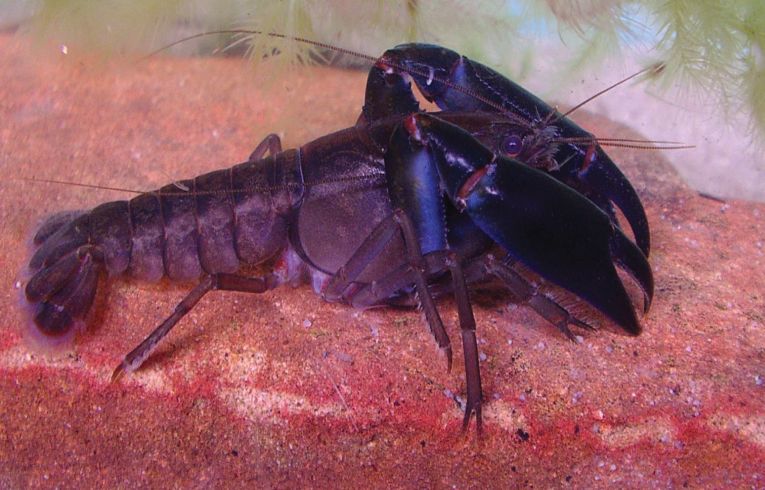It's not often we get to write on some animal so small that it can sit on your finger nail. We show photographs of the miniature chameleon Brookesia superciliaris and frogs which are about the same size, but they're always fascinating.
Australasia being the land of opportunity, as far as echidna fossils and reptiles are concerned, we were not surprised to find a new crayfish in eastern Australia, New South Wales to be exact. It represents the 2nd species of Gramastacus, named after the lobster and crayfish genus, Astacus. Gramastacus lacus is to be called the eastern swamp crayfish, after its sister species, G.insolitus.
The speciality of our new kid on the block is ephemeral habitat. In other words, it has adapted to regular natural floods with temporary dry cycles, the niche being near various isolated lowland lagoons near the coast. The most obvious adaptation is, for it, an enormous metre-long burrow into which it secretes itself in the dry season. The size of these small crustacean is a rare maximum mass of 7g and a length of 21.32mm. (For those unwilling to convert, that's 0.25oz. and 0.84 inches.) The weighings usually found a mean of only 4-5g, with large animals being most unknown.
Suitable habitat further south in NSW is likely to have few specimens, while in the north, no individuals are known. This is probably down to the rapid recent spread of human activity in these coastal areas near Newcastle. The species could well be threatened, as it is already. The National Park system, including Myall Lakes is fortunately prominent in the area, because there is enough predation from non-human sources such as eels, gudgeon, alien minnows, giant water bugs known as Lethocerus insulanus, turtles, lizards and innumerable bird. The biggest immediate threat is the big (20-30cm) and well-named crayfish species, Cherax destructor. They are the popular yabby, often used for aquaculture locally. So far densities of this mini-crayfish have been found at up to 35 a square metre in the Myall Lakes area, giving rise to speculation on their probable survival for the moment.
The sister-species, Gramastacus insolitus is a similar size but doesn't burrow. Instead it cannily borrows the burrows of larger crayfish in western Australia. In the new species, only one individual is found in each hole, except where one juvenile occasionally appeared with an adult. Aggression between the members off the species perhaps reduces the population too, as the chelae (claws) are big compared to the animals' size.
Robert B McCormack from the ACP (Australian Crayfish Project) wrote the paper, "The eastern swamp crayfish Gramastacus lacus sp. n. (Decapoda, Parastacidae) a new species of freshwater crayfish from coastal New South Wales, Australia," after years of sampling and writing up data, in ZooKeys.










